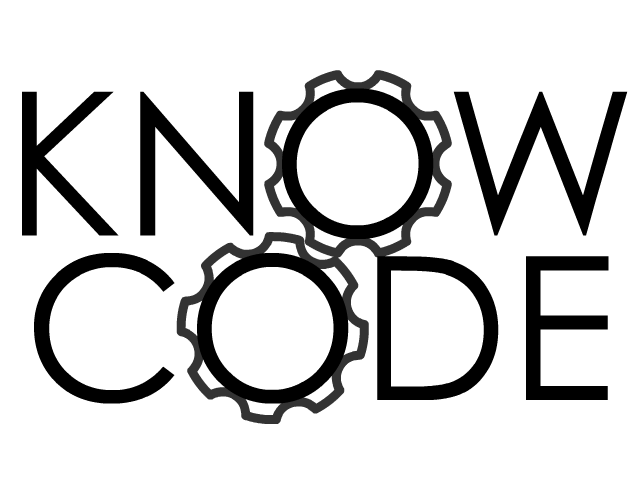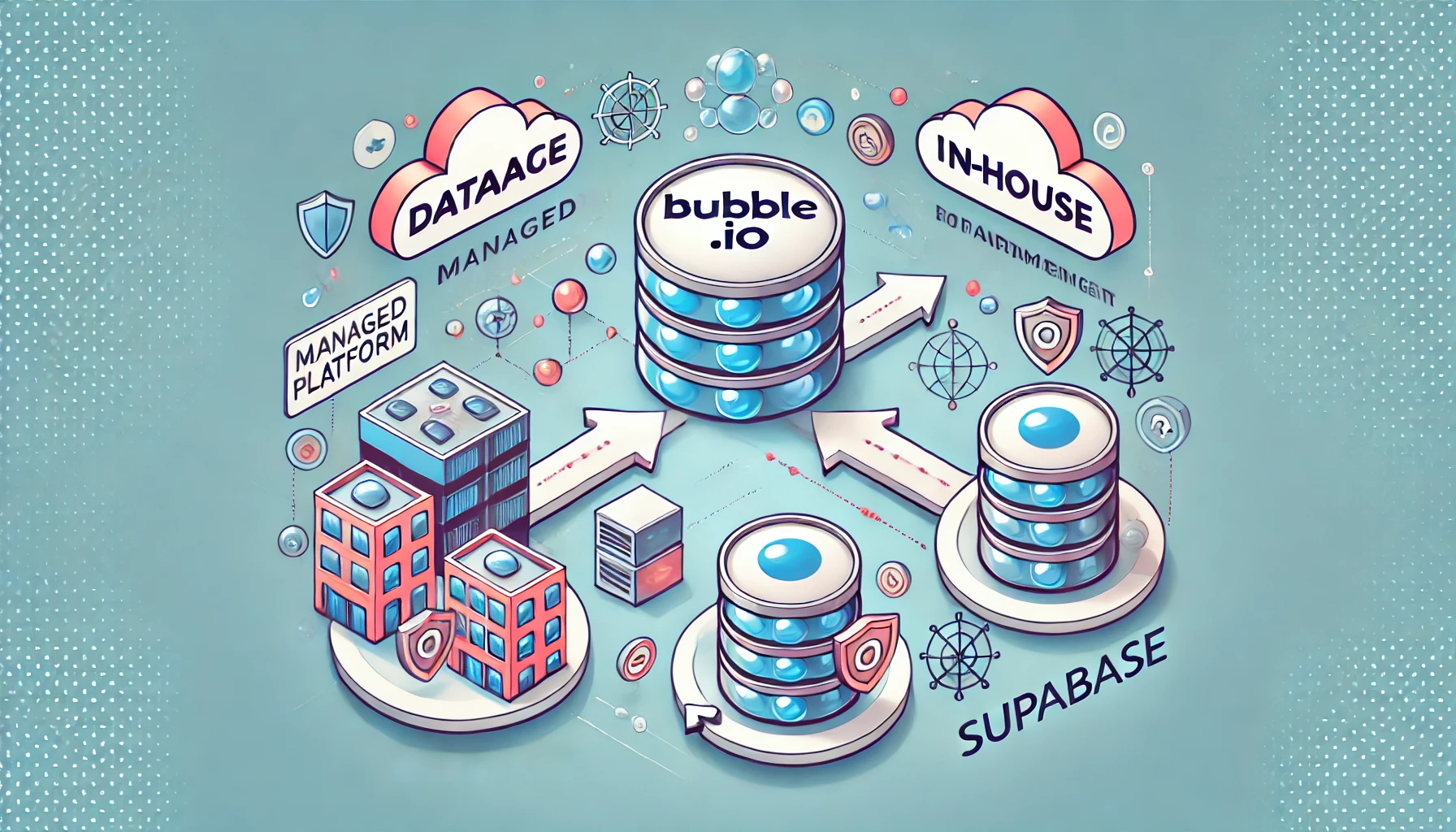Moving from a Fully Managed Platform like Bubble.io to In-House Management: What Your Expanded Team Needs to Know
Migrating from Bubble.io’s fully managed platform to using an external relational database like Supabase is a big step for any Bubble application. While the transition brings many benefits, such as greater control and flexibility, it also comes with increased responsibility. In Bubble, all of the technical management—like scaling, security, and infrastructure updates—is handled behind the scenes. When you move to an external platform, your team needs to take ownership of these tasks, which often requires expanding your technical staff and implementing new processes.
Here’s what your team needs to consider when making the shift from a completely managed platform to an in-house management model.
1. Shifting from Automatic Infrastructure Management
When you use Bubble.io, you’re leveraging a fully managed platform that takes care of key infrastructure elements like scaling, security, and performance monitoring. Bubble’s abstraction layer allows non-technical users to develop applications without worrying about what’s going on behind the scenes. However, this simplicity comes at the cost of control.
What You Gain:
- More Control: Moving to a platform and using a managed service database like Supabase gives you direct access to your database, allowing for better optimization, advanced querying, and use of relational database features like foreign keys and constraints.
What You Lose:
- Automatic Scaling and Updates: On Bubble, as your app grows, you don’t need to worry about increasing memory or upgrading the infrastructure. Once you migrate, your team will need to monitor resource consumption (e.g., memory and disk space) and perform infrastructure upgrades as needed. Supabase handles some of this automatically, but your team will need to manage other aspects manually.
In-House Responsibility:
- Database Monitoring and Scaling: With a relational database like PostgreSQL on Supabase, your team will need to monitor the database's performance and scale as necessary. This might involve thinking about database table design - something you don't often think about in bubble with respect to performance..
2. Taking Over Security and Compliance
In Bubble.io, security is largely handled for you. your responsibility was largely just built-in privacy rules. Once you migrate, your team will need to actively manage security, which includes setting up firewalls, running security scans, and monitoring for potential vulnerabilities.
What You Gain:
- Custom Security Policies: Moving to a platform like Supabase allows you to implement row-level security, giving you more granular control over who can access specific records.
What You Lose:
- Managed Security: Bubble abstracts many security concerns. After migrating, your team will need to ensure compliance with regulations, manage role-based access control, and protect the infrastructure from external threats.
In-House Responsibility:
- Security Audits and Vulnerability Scanning: With more control over your infrastructure comes the responsibility of keeping it secure. Your team will need to set up regular security audits, configure access control policies, and ensure that the platform remains compliant with industry standards.
3. Handling Database Design and Relationships
Bubble.io’s database structure is simple and easy to work with, even for non-technical users. Relationships between tables are implicit, and primary keys are automatically generated. In contrast, relational databases like PostgreSQL require more explicit control over data relationships, primary keys, and foreign keys.
What You Gain:
- Referential Integrity and Advanced Features: Relational databases provide more robust control over data consistency. You can enforce referential integrity through foreign keys and use advanced querying features to optimize performance.
What You Lose:
- Implicit Relationships: Bubble easily allows for many-to-many relationships without any additional setup. When moving to a relational database, you’ll need to explicitly define these relationships, which means more work for your development team.
In-House Responsibility:
- Database Schema Design: Your team will need to design the database schema carefully, ensuring that foreign key constraints are in place and that the data model supports all necessary relationships between tables. This might also involve restructuring some of your data models to fit the relational database paradigm.
4. Taking Over Logging and Monitoring
Bubble.io’s built-in monitoring and logging are limited, but they cover the basics for most small applications. When you move to an external database, you’ll need to implement your own monitoring tools and logging systems.
What You Gain:
- Better Insight: With platforms like Supabase, you get more advanced logging and monitoring tools, allowing you to gain better insights into database performance and errors.
What You Lose:
- Managed Error Handling: On Bubble, when something goes wrong, you can file a support ticket and let their team handle it. Once you migrate, your team will need to troubleshoot issues, handle logs, and address errors in real-time.
In-House Responsibility:
- Error Handling and Performance Monitoring: Implement tools to monitor database performance, track errors, and manage logs. Your team will need to be proactive in identifying and fixing issues as they arise.
5. Expanding Your Team to Manage the Transition
One of the major advantages of Bubble.io is that you can build complex applications without needing a highly technical team. However, when you migrate to a code platform, you’ll need to expand your team to manage the more technical aspects of database management, security, and infrastructure.
What You Gain:
- Control Over the Full Tech Stack: By migrating, you have full control over every layer of the application, from the database to the front-end, allowing for more customization and performance optimization.
What You Lose:
- Low Technical Requirements: In Bubble, even less experienced developers can manage an app. Moving to a relational database means you’ll need experienced developers who can manage DevOps, database administration, and more complex security tasks.
In-House Responsibility:
- Expanded Roles: You may need to hire or out-source DevOps engineers, database administrators, and security specialists to manage the new infrastructure. This is especially true for larger applications where uptime and performance are critical.
Conclusion: The Trade-offs of Moving Off a Managed Platform
Migrating from Bubble.io to a platform and using an external database like Supabase gives you more control and scalability, but it also comes with increased responsibilities. While you gain access to relational database features, enhanced security, and better logging, your team will need to manage the infrastructure in-house, which requires additional skills and resources. Expanding your team to include DevOps engineers, database administrators, and security specialists is essential to ensure that your app remains performant, secure, and scalable.
Moving from a fully managed platform is a major step that requires careful planning, but with the right team and processes in place, it can unlock new levels of performance and flexibility for your application.

